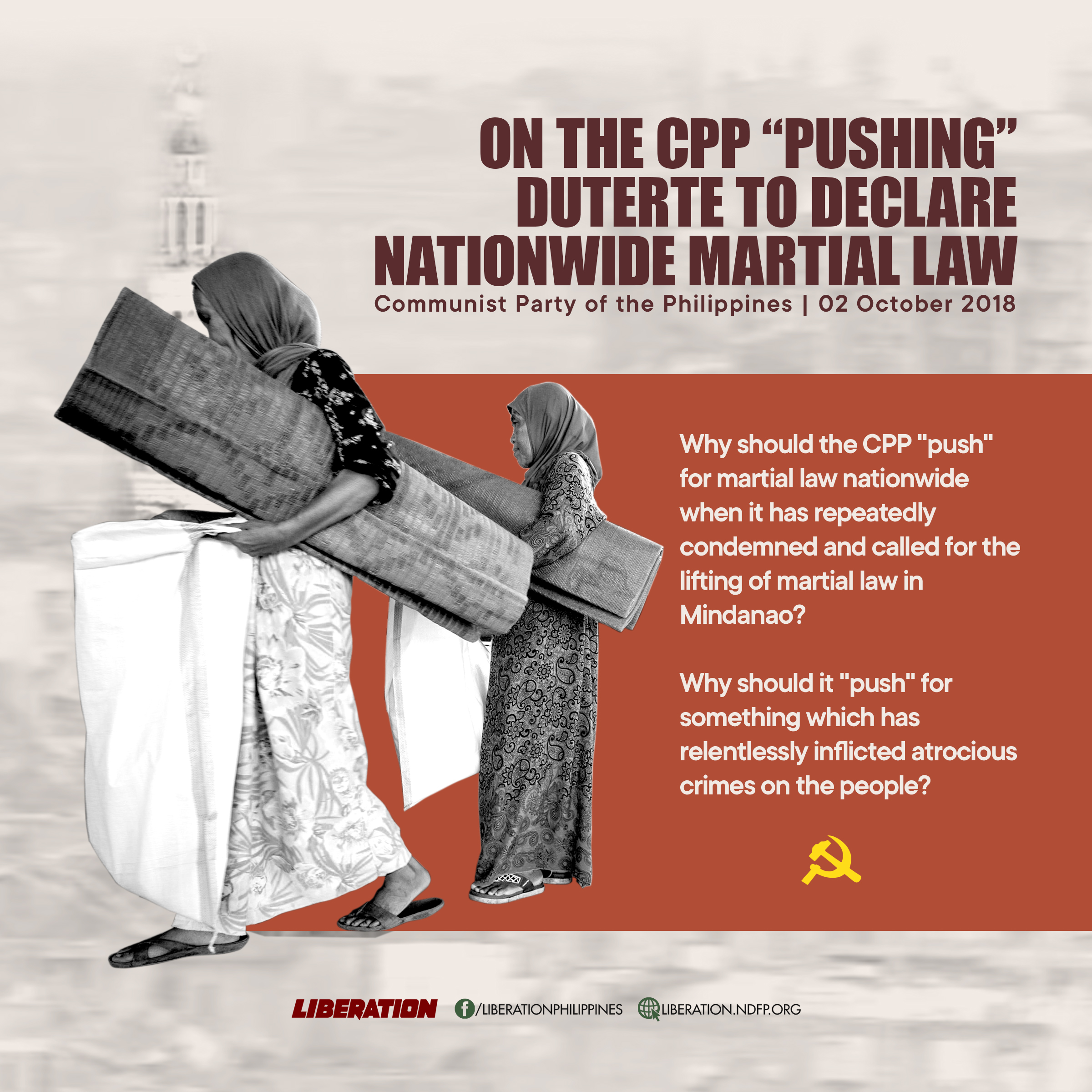43 CASUALTIES OF AFP AND PNP IN NEGROS
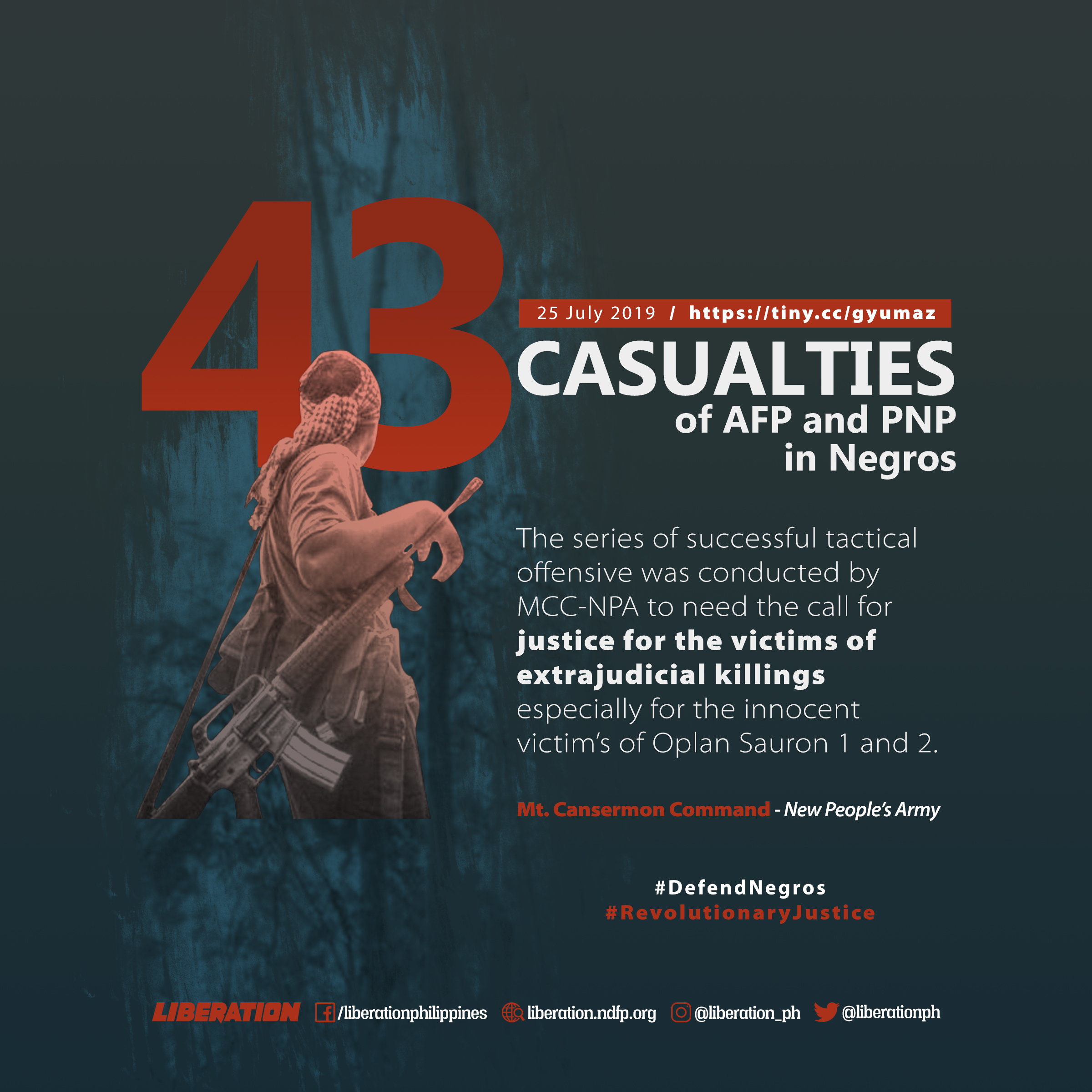
Not less than 43 soldiers and police is the recorded casualty in three tactical offensive by the New People’s Army under Mt. Cansermon Command (MCC) in Negros since June 22- July 18.
Last June 22, a unit of MCC – NPA conducted a sniping operation which resulted to 3 casualties on the side of the 94th IBPA in the hinterlands of Sitio Bulo, Brgy. Bantolinao, Manjuyod, Negros Oriental. The soldiers killed are part of the team securing the area for the medical mission sponsored by Police Regional Office 7(PRO 7).
While conducting combat and clearing operation, the joint force of 94th IBPA and 704th Regional Mobile force Batallion we’re ambushed through the use of command detonated explosives (CDX) and exchange of firefight in Sitio Cambugtong, Brgy. Bantolinao, Manjuyod, Negros Oriental. More than 20 recorded casualty on the fascist reactionary side. To save face, only 1dead and 2 wounded was reported to the public.
Meanwhile last July 2, a unit of MCC-NPA foiled the raid attempt of 11th IBPA in Sitio Small Samac, Brgy. Nalundan, Bindoy, Negros Oriental. The unit of MCC-NPA launched a counter offensive and positioned for ambush. The gunfight ensued for an hour which resulted to 10 dead and 6 wounded on the side of the military. No casualty on the NPA side and the unit successfully maneuvered outside the enemies encirclement with the guidance of guerilla tactic’s in warfare.
On othér news, four police killed in an ambush in Sitio Yamot, Brgy. Mabato, Ayungon, Negros Oriental. Aided by a substantive Intel report the enemies plan to conduct another record round of oplan sauron was deferred. Confiscated from their possession are 4 canik 9mm pistol, 9 magazines and 135 ammunition, and a list of names of their targets.
The series of successful tactical offensive was conducted by MCC-NPA to need the call for justice for the victims of extra judicial killings especially for the innocent victim’s of Oplan Sauron 1 and 2.
Oplan Sauron or Synchronized Enhanced Management of Police Operations (SEMPO) is the current fascist move of the Duterte régime to brutally attack the people of Negros. It is characterized by surprise and synchronized attack of target locations; planned arrest or killing of targets. Since its inception last December 2018, it already claimed 21 victims killed and almost 100 illegally arrested on false charges. it has also resulted in forced evacuation and destruction of crops and livelihood of the people.
Dionisio Magbuelas, Spokesperson
Mt. Cansermon Command-New Peoples Army
July 25 2019
http://tiny.cc/lzpgaz
#DefendNegros
#RevolutionaryJustice
#FightTyranny
#JoinTheNPA
#ServeThePeople


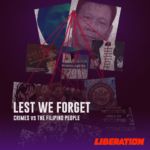

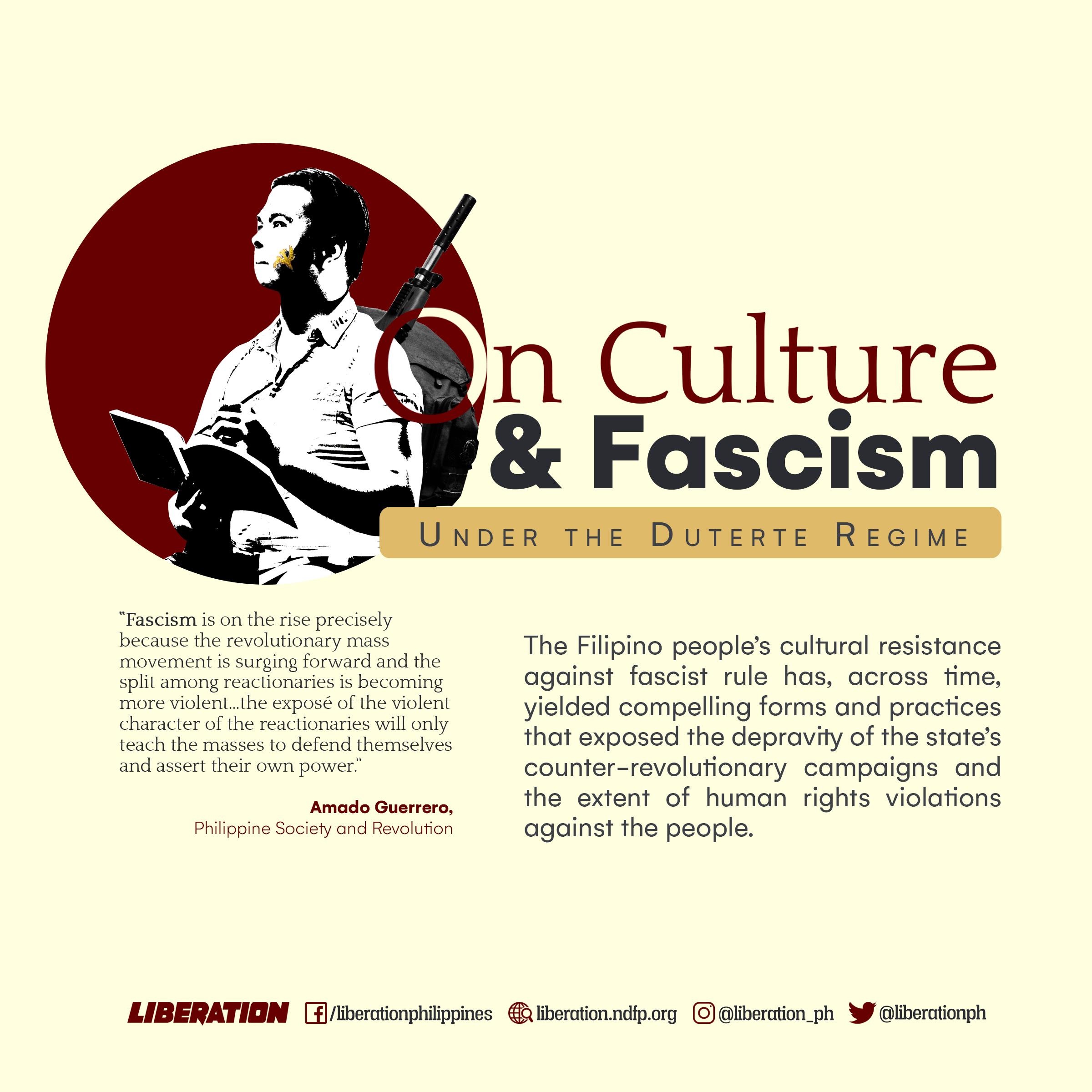
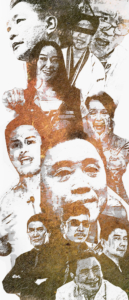 by Alejo Nicolas
by Alejo Nicolas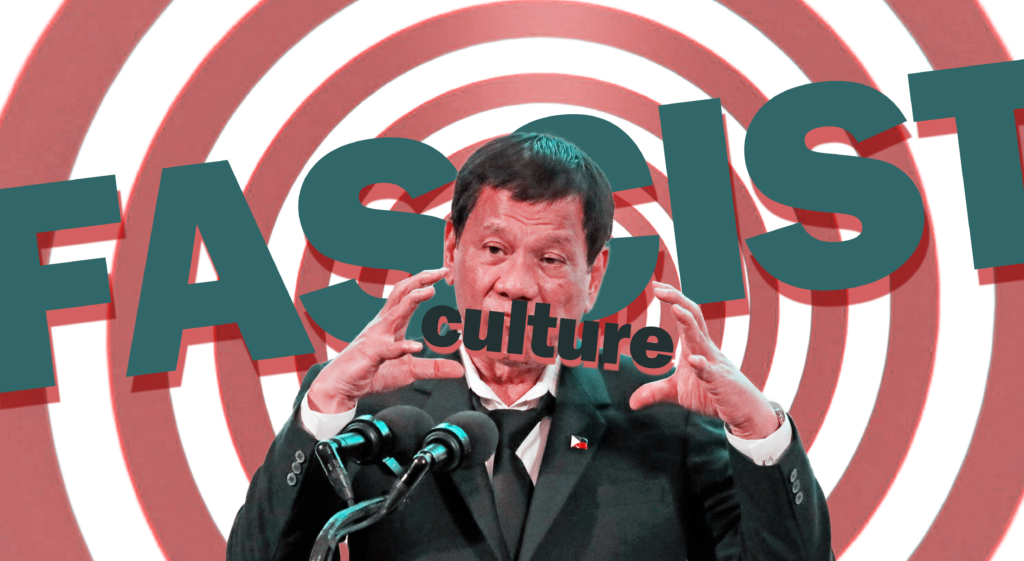 Signs of tyranny
Signs of tyranny Art and culture for the anti-fascist struggle
Art and culture for the anti-fascist struggle



